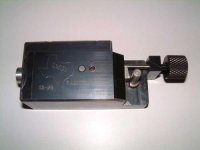I do not have a heat issue when turning, and it is my opinion that those that do have expander mandrels that are too small for their turning mandrels, and are turning too fast. For brass for my .262 neck chambers, I take two cuts. The first one comes within .001 or so of the final thickness. I do this with an old Sinclair tool that has a smaller mandrel than I would use for a finish cut. This does away with all brassing and heat issues, and any inaccuracy will be taken care of on the finish cut. The final cut fit is eased by the removal of that material. I have an old Makita drill that I use to turn with, with the gear box set for low range, and the trigger not fully pulled. I make the finish cut with a K&M with a carbide mandrel, and would not go back to steel for that application. I check every neck with my neck mic., after finish turning. Technique is also important. I intentionally feed to the shoulder much too rapidly to make a clean cut, so that I am cutting all the way back to the case mouth, which I do at a very slow feed rate. This keeps the neck securely pinned to the mandrel the whole time that the cutter is on the neck, which is what you want for consistent thickness. After, I finish turning, I wrap some 0000 around the neck and spin it at a the fastest RPM in the slow range for about a second, Then I measure. My results are good, and that validates my procedure. One last thing: I used a K&M case driver for years before switching to a 21st Century. The difference is night and day. I get almost no wobble, and securing the case by hand is not a problem. It works a lot better.


